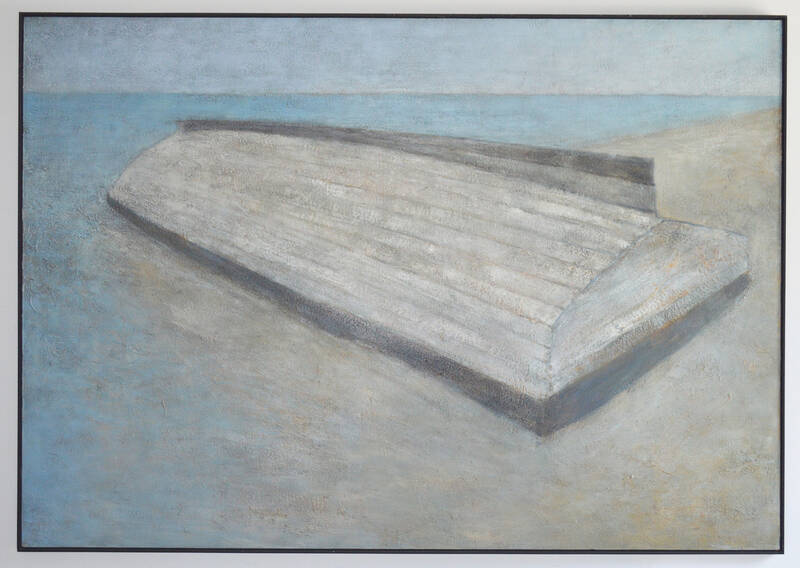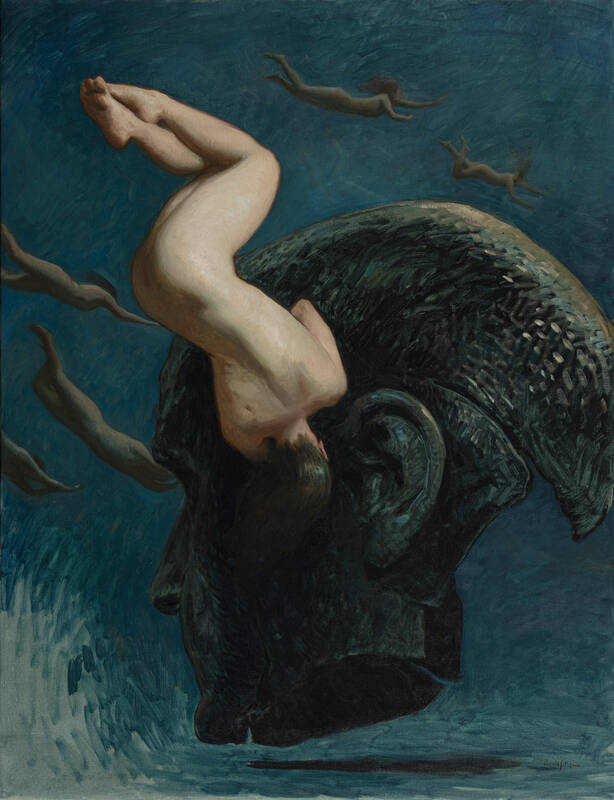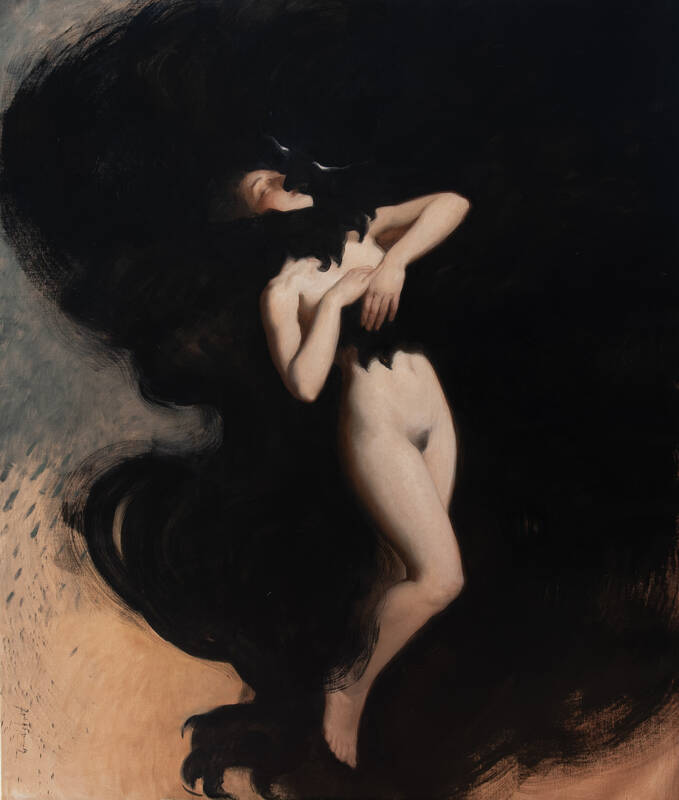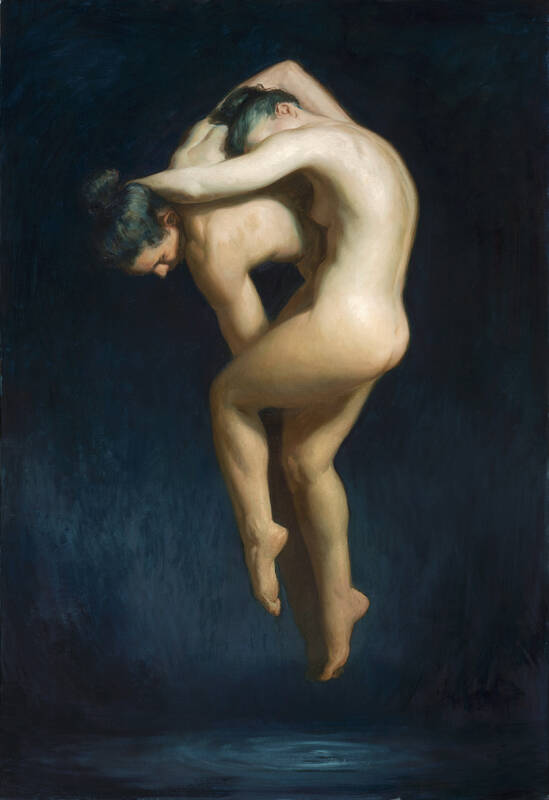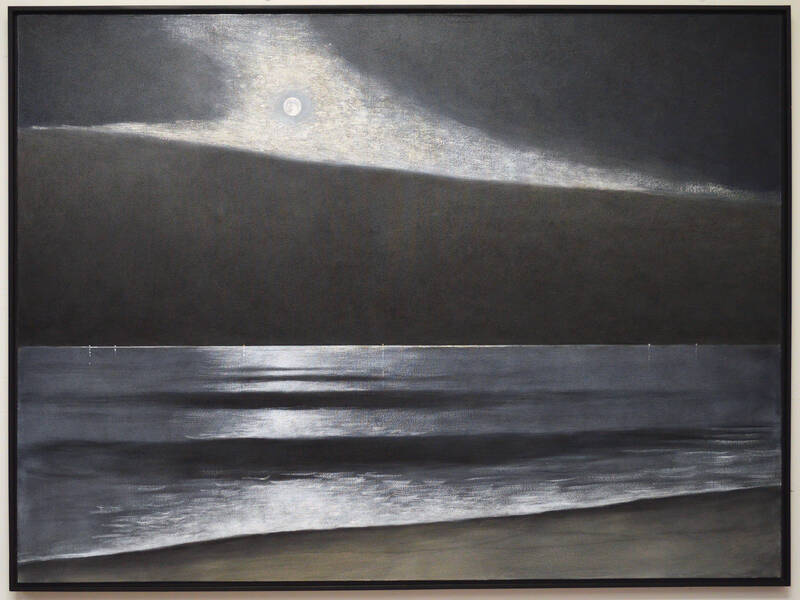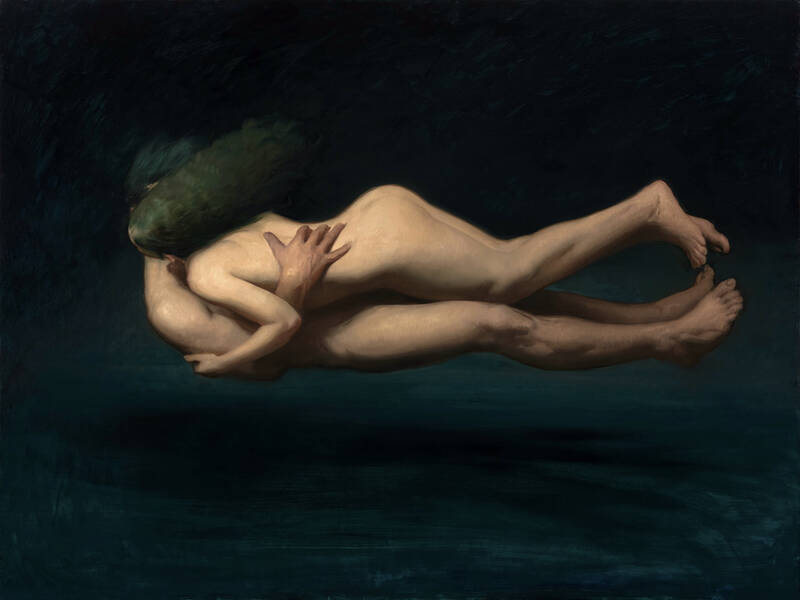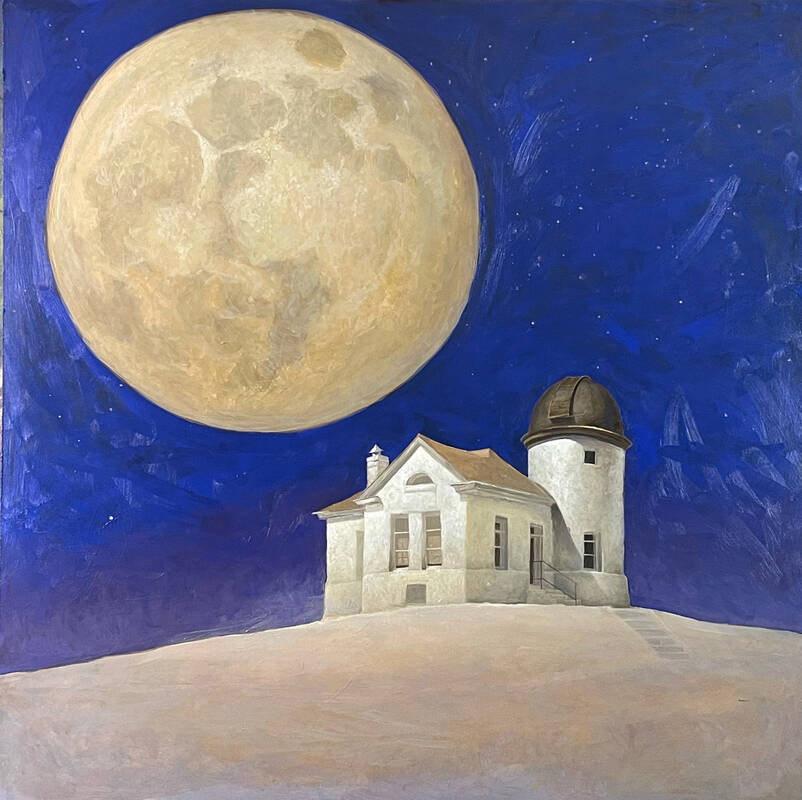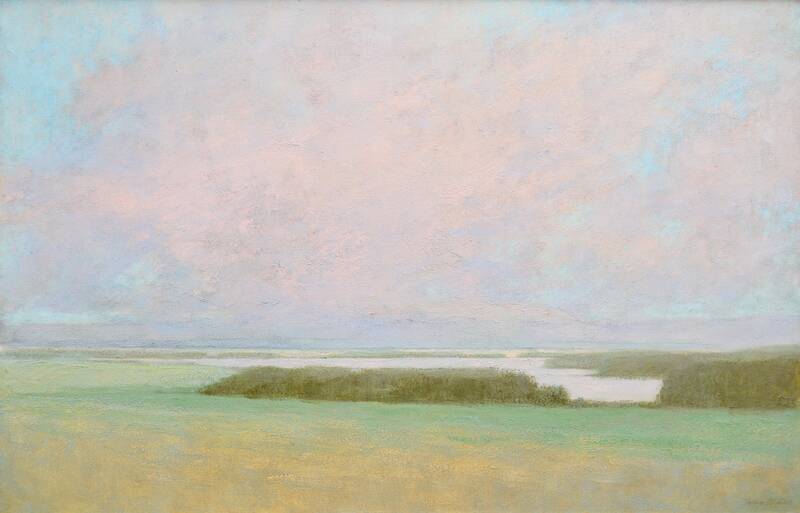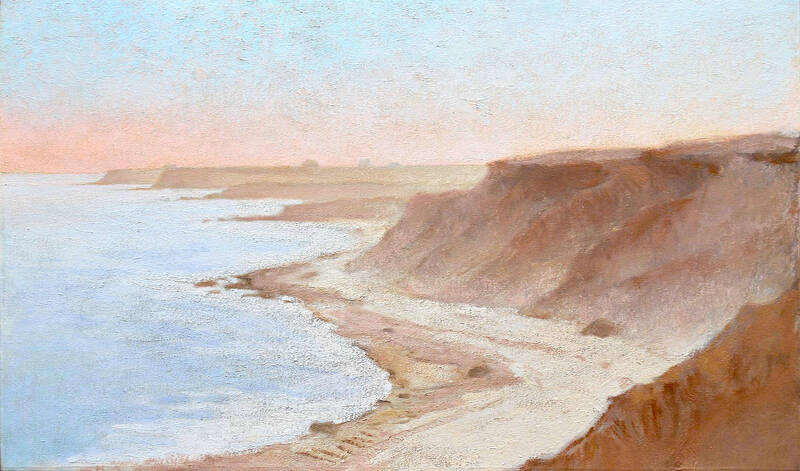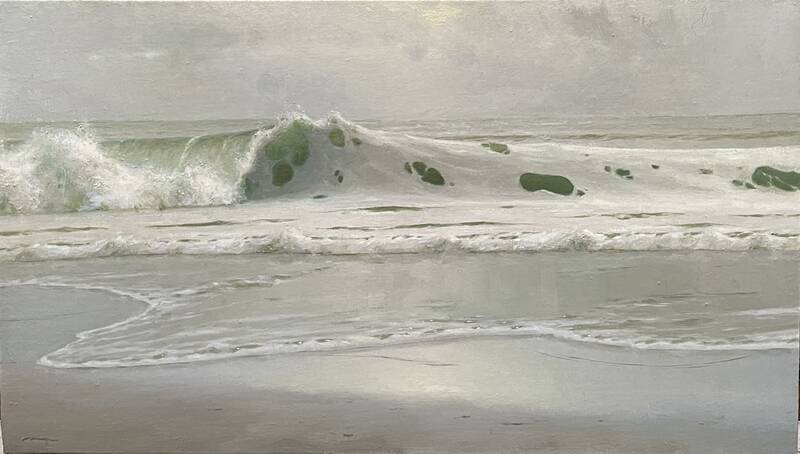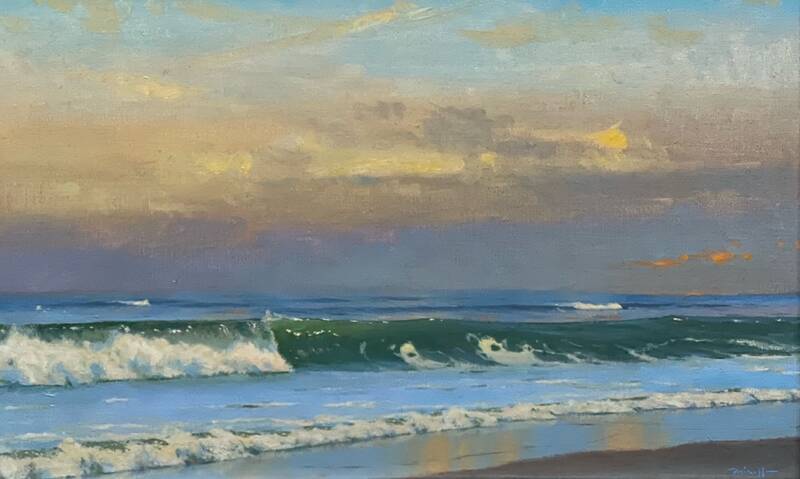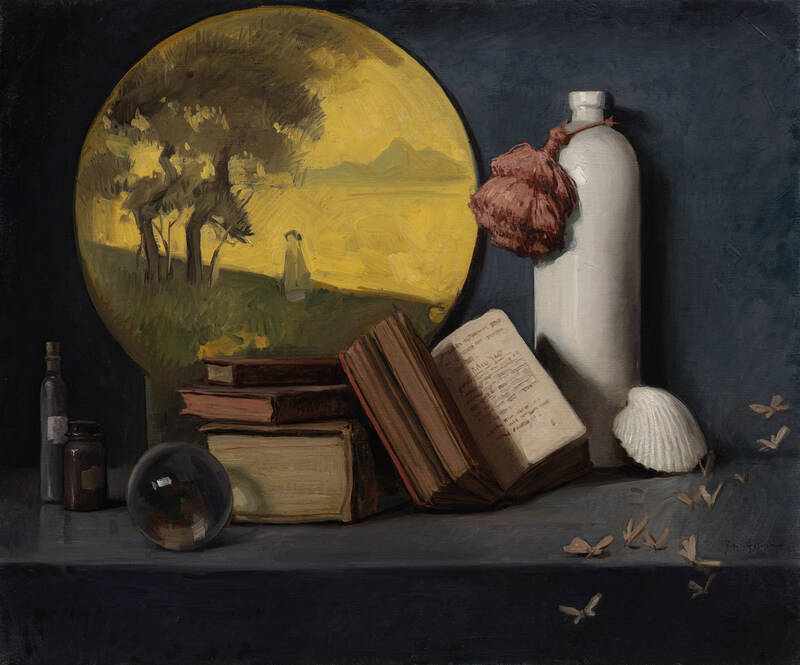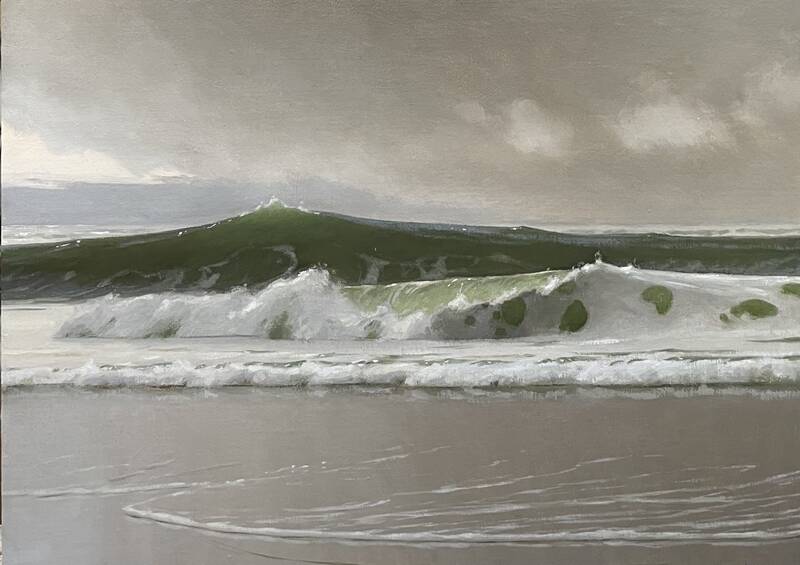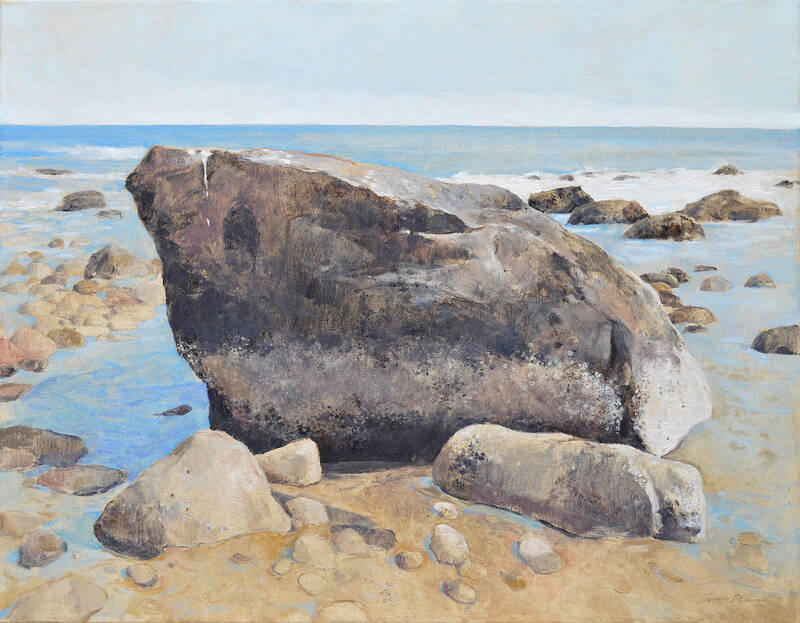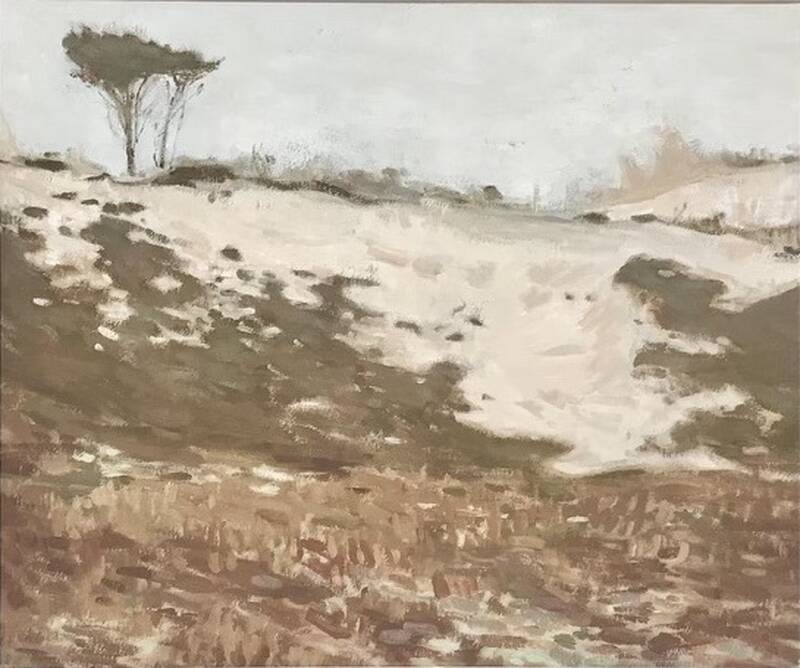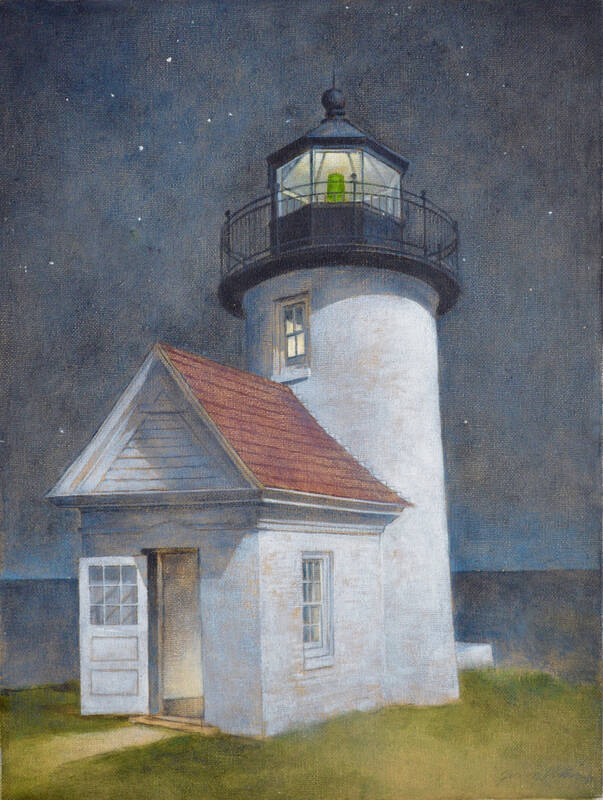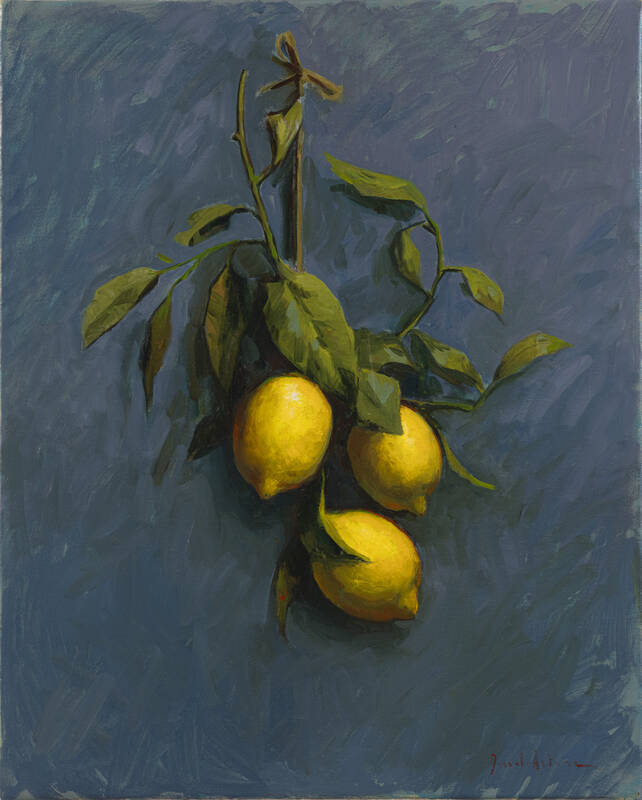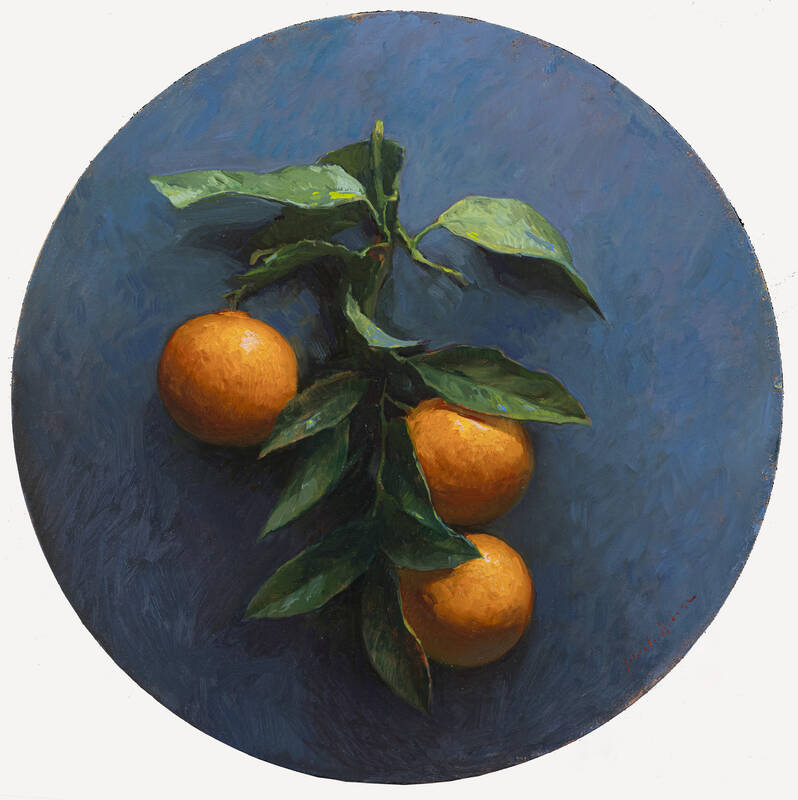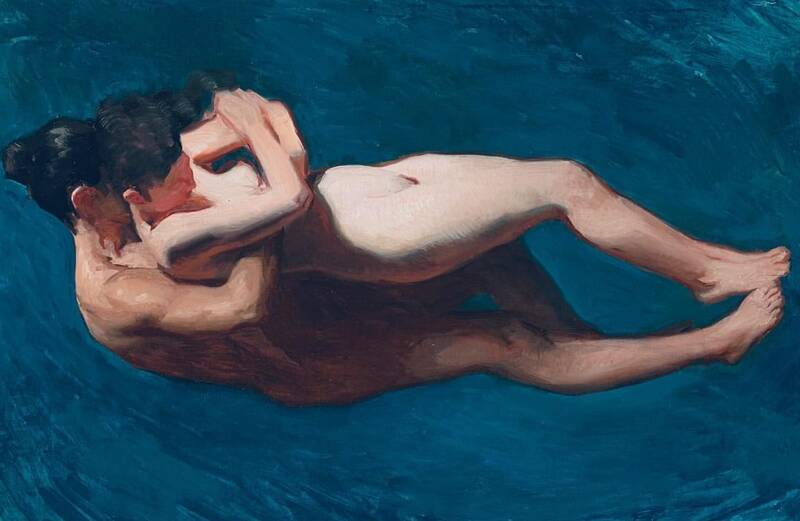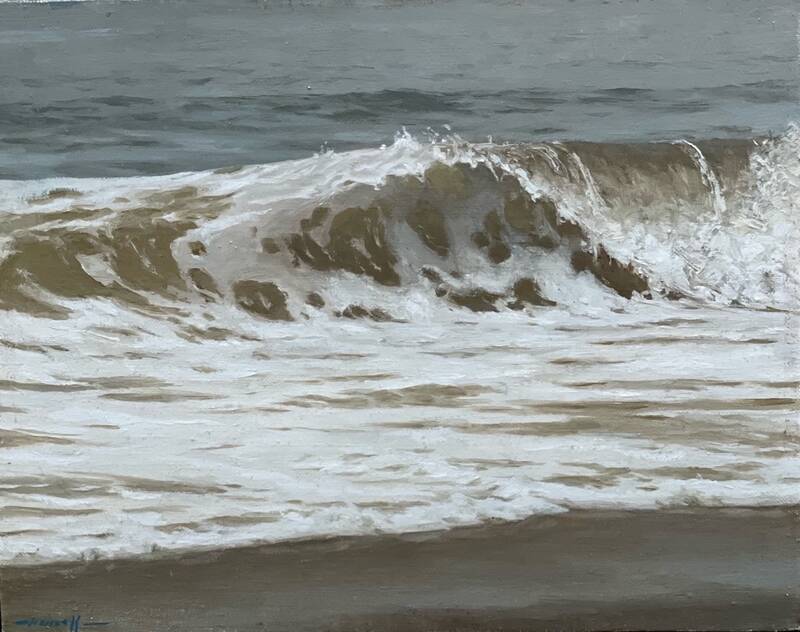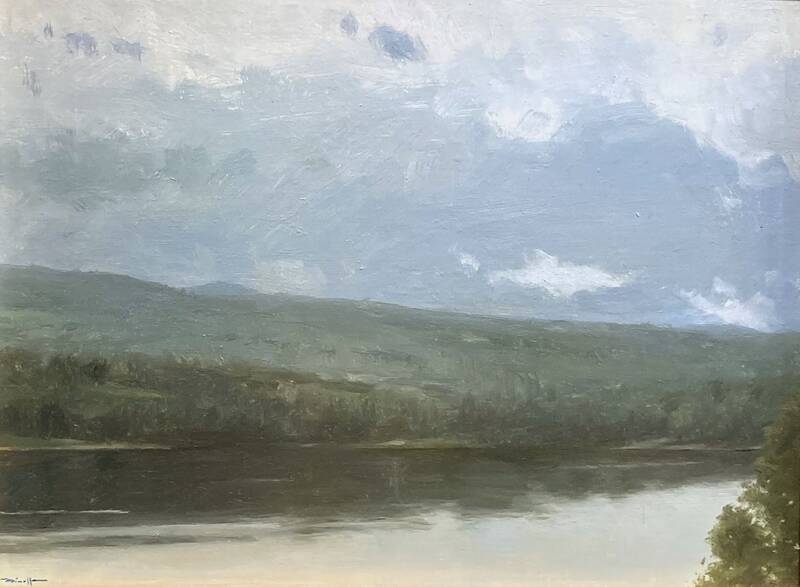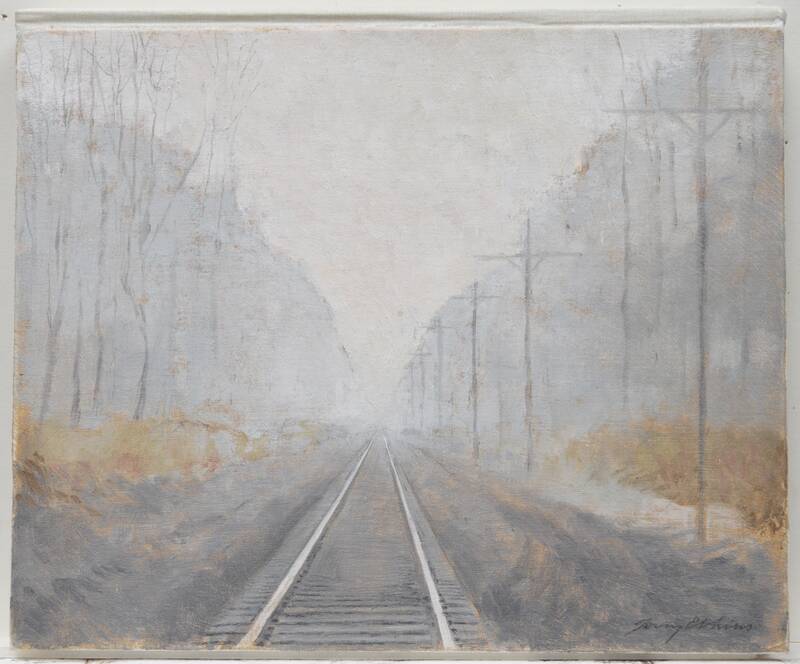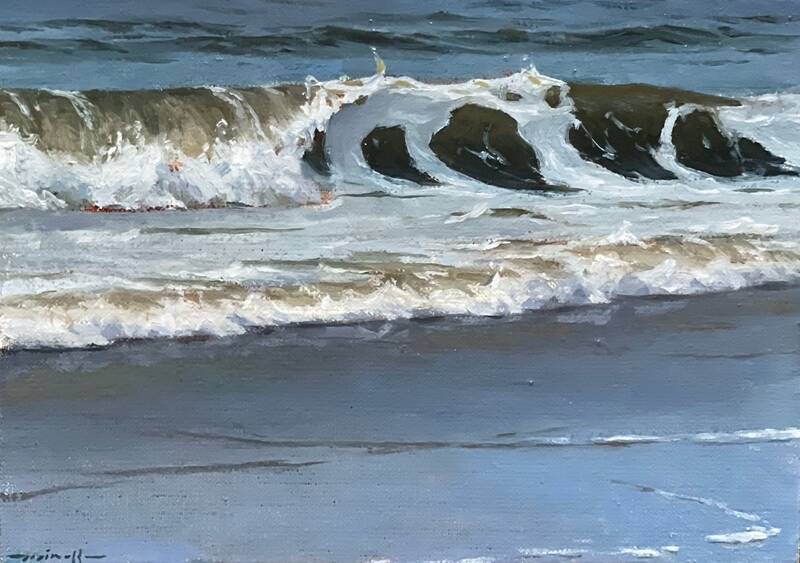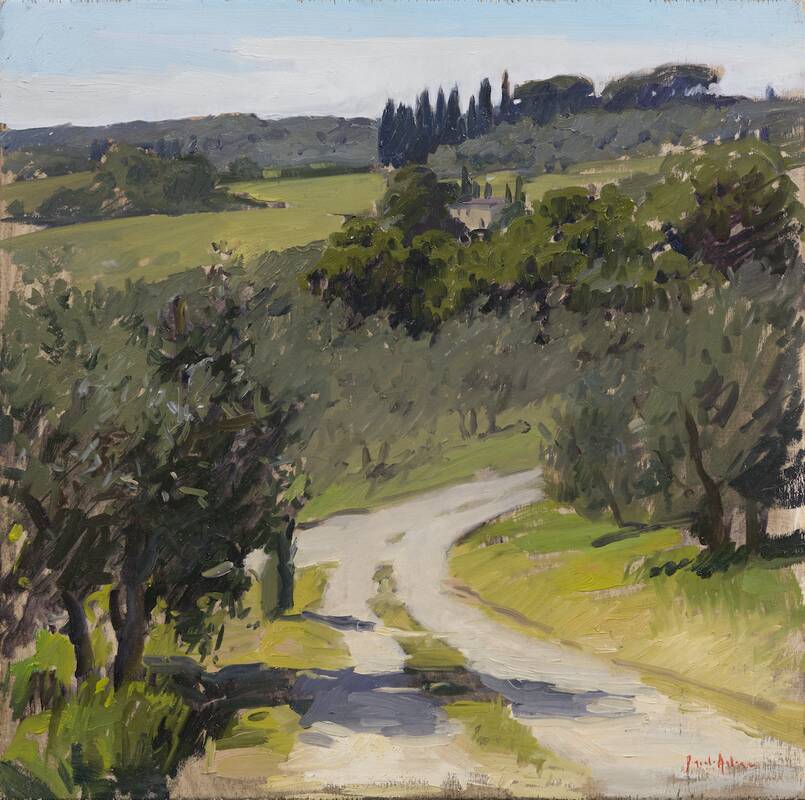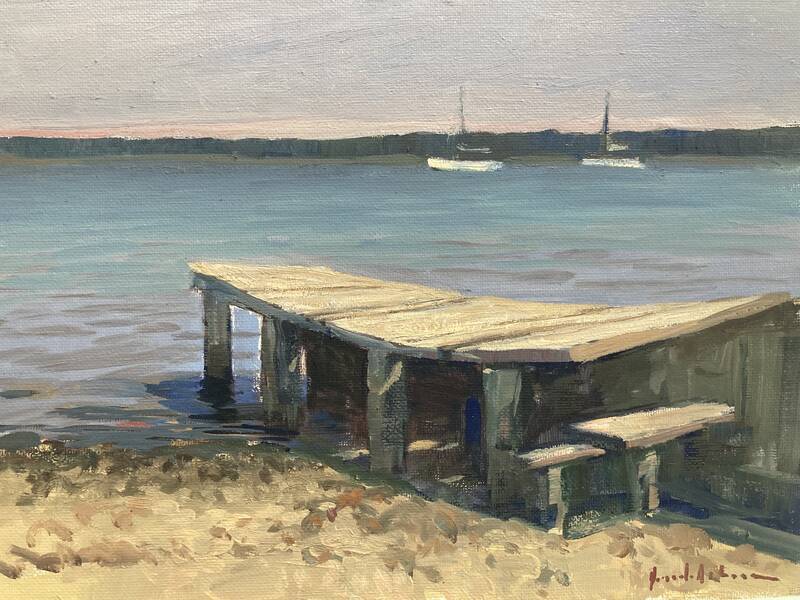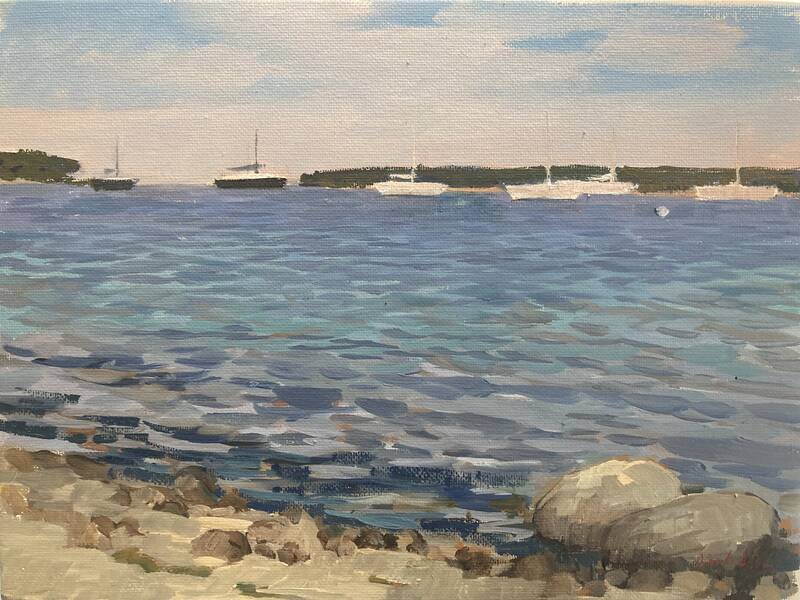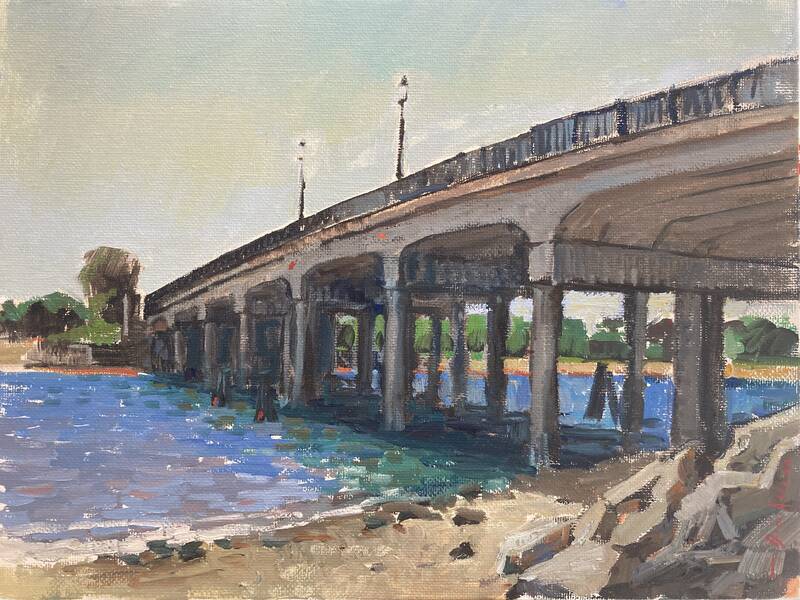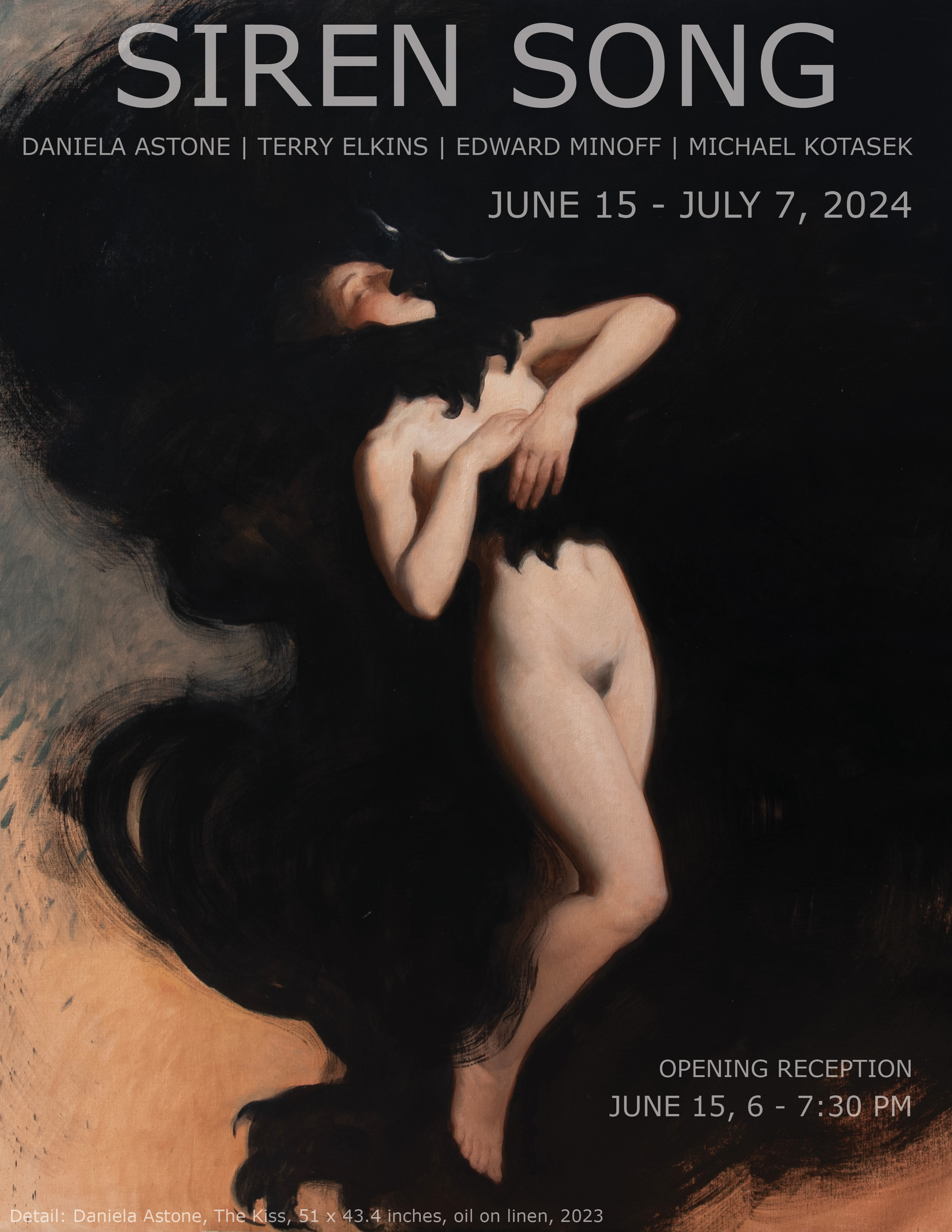
The Grenning Gallery is pleased to present our first exhibition of Summer 2024: Siren Song—featuring work from a group of painters, both local and international, who are enchanted by the wondrous and powerful sea: Daniela Astone, Terry Elkins, Edward Minoff, and Michael Kotasek. This exhibit will hang through Sunday, July 7th. Please join us for an Opening Reception on Saturday, June 15th, from 6-7:30 PM.
The irresistible music of the Sirens—the hybrid women creatures from Homer’s Odyssey who lure male sailors to their death, and subject of Margaret Atwood’s 1974 poem “Siren Song”—is the inspiration for this exhibition. The sea has endless allure. Engaging all senses, the sea soothes the soul – a refreshing and healing natural resource.
The “Hamptons” has its own allure, like that of the Sirens. Every weekend hundreds of people flee the city and trek 100 miles east to be near our seas. The Hamptons offers the relief of fresh air, conserved land, and boundless water.
The anchor artist for this exhibition, Daniela Astone presents surrealistic compositions of figures floating in water—or enveloped in a fog-like beast (The Kiss)— mixing a foreboding eeriness with enchantment, while Michael Kotasek’s painting conveys the relationship between man’s curious search for knowledge and the perpetual possibilities beyond the earth. Terry Elkins and Edward Minoff, remind us of the seductive beauty that the East End promises. These paintings invite you into a mysterious world of pure splendor, without the consequences of following Homer’s Sirens.
After years of intense studio work, painting only from life, Daniela Astone (b. 1980 | Pisa, Italy), now finds inspiration from her dreams. The Kiss is a standout tour de force. Of course, it recalls Gustav Klimt's famous 1908 painting of the same name but instead of an ornately fashioned couple on a gilded background, Astone unveils a mysterious creature enveloping and suspending a pure and striking nude figure in mid-air atop a natural canvas. The shadow figure appears ominous until you notice the nude figure leaning into her partner, her hands lightly caressing, and leaning on the amorphous creature. Her body is relaxed, and her eyes closed; she is safe in it’s embrace. As a classical artist who paints the nude figure every day, Astone is masterful at depicting women at ease in their natural bodies rather than women self-conscious of their nudity—posing but fearful of exploitation at the same time—a theme in art history that continues today.
This juxtaposition of a real human form amidst a nebulous entity is exquisitely executed. Extreme, deep black takes over from the top right of the canvas. Yet, it is obscure where it’s form ends – the way a cloud will dissipate, unstructured edges fall away. Note where the nude’s calf becomes softly swathed in dark matter in sweeping strokes of black paint, alluding to Japanese ink paintings. This pitch-black presence dilutes to grey along the left. Furthermore, droplets of it’s form rain down into the ether, where the artist has delicately signed her name.
Astone, being Italian, often meditates on her peninsula’s heritage and it’s role in contemporary life. The myths of her ancestors consistently loom over everyday life. It was these treasured tales which helped civilization form and cope with the common struggles and mysteries of life. In Deep Down, Astone conjures figures floating down, en-masse, towards a fictional lost bronze Roman artifact. The figure in the foreground leans-in to whisper something in the ear of the broken off head—further connecting the now and the then. What story she is telling the ancient sculpture, is up to the viewer. Once again, Astone skews her realist execution by leaving brushstrokes undone along the lower left, reminding the viewer of her hand in the composition.
For Dancing Love, Astone brought professional dancers into her studio and let them improvise as she painted them. She decided to paint this particular position the dancers held for only a moment in a larger canvas because she loved the way the male and female dancers' bodies intertwined in not a typical freeze-frame grande jete or lift. She placed the dancers in deep water in her canvas as part of the larger surrealistic series of figures floating through ethereal space. Les Deux Moités or The Two Halves, continues this theme. A man and a woman, fitting perfectly together with ease, share a tender embrace. Their bodies float above the sea floor and glow against the dark blue background.
me and you walking on the brick pathis a painting of a dream Astone had one night; of her and her daughter walking together on the sea. Visions of the yellow brick road come to mind as well in this (literal) triangle composition. Travelers on the brick path look for answers, for home, for inspiration.
After growing up in the American South and receiving his BFA from Sam Houston State University, and an MFA from the University of Houston in Texas, Terry Elkins (b. 1951 | Mississippi) was drawn to the East Coast to forage his career as a painter. When Elkins first came to the South Fork of Long Island in the late 1980’s, the culture was slow-paced, humble, and centered around an economy of independent fisherman. Every day, Elkins would witness Baymen set out to sea in their dories to cast nets offshore to earn a living from their catch. Decades later, that lifestyle has sadly dissolved due to huge offshore fishing fleets, and the crunch of 21st Century conventions. Nonetheless, Elkins paintings are devoted to this humble vision of the Hamptons; where a dory can lay along the beach unlocked without fear of tampering or theft; and the serene beauty of the local landscape is more than sufficient to satisfy one’s way of life.
After nearly 4 decades of living on the East End, Elkins avows that “there are many beautiful places here, and I will honestly say I’ve discovered most of them.” Wainscott Pond, Late Summer is an interpretation of what Elkins says is “one of the last and most panoramic vistas on the East End. It’s close to where I live, and sometimes, I feel like painting is just an excuse to be there.” Barcelona Point is another one of those secret spots. Secluded and hard to get to if you don’t know the way, but he promises it’s well worth the excursion. Unspoiled lands, fortunately protected by conservation easements, native ecosystems are allowed to thrive unhindered by human contamination and development.
Edward Minoff b. 1972 | New York, NY)returns to the gallery delivering expert realism from his arduously trained hand, with a new series of seascapes. Growing up in NYC, Minoff spent his summers on Long Island Beaches, soaking up the sun and sand while he could. It’s no wonder that the sea has become his main inspiration in painting. This new series, however, focuses on the ocean’s mightiness. In Emeralds, grey skies hovering above rich green waves dictate a stormy temperament; the crash of the waves make impact with fortitude. A current so strong, the seafoam sees no moments of relief to dissipate to clarity. Thin films of water reach toward the viewer along silvery sands, appearing so delicate, so inviting. Yet beyond is a commanding tide that only the strongest swimmer could match.
Finally, we are lucky to receive a new painting from Michael Kotasek (b. 1962 | Upstate NY). A gigantic full-moon radiates against a deep blue night sky. A sandy hill in the foreground houses one single structure, an observatory: a man-made edifice used to observe terrestrial, marine, or celestial events. The title of the painting, “Hello?” empashises this curiousity of man. Kotasek positioned these subjects in an exaggerated way; it’s as if one could run up to the roof of the building and reach out and touch the moon. Kotasek has the unique ability to bring us to a place that is almost familiar but has no name, a sort of no-man’s land—a world of his own creation that we as viewers are enticed to decipher and discover.


